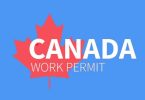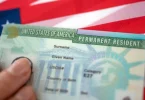Thinking about moving to Canada as a skilled worker? You’re not alone. Every year, thousands of professionals from around the world make the leap to start a new life in the Great White North. Canada is known for its high quality of life, diverse culture, and welcoming attitude towards immigrants. Skilled workers, in particular, are in high demand to help boost the economy and fill gaps in the labor market.
Why Canada Needs Skilled Workers
Canada’s aging population and low birth rates have created a significant demand for skilled workers. The country has developed various immigration pathways to attract global talent, ensuring its economy remains dynamic and competitive. If you possess skills that are in demand, Canada could be your next home.
Understanding the Canadian Immigration System
Express Entry System
The Express Entry system is the primary pathway for skilled workers to immigrate to Canada. It’s a point-based system that ranks candidates based on factors like age, education, work experience, and language proficiency.
Provincial Nominee Programs (PNP)
Canada’s provinces and territories have their own immigration programs called Provincial Nominee Programs (PNP). These programs allow provinces to nominate individuals who wish to immigrate to Canada and settle in a particular province.
Quebec Skilled Worker Program
Quebec has its own selection criteria and immigration program for skilled workers, separate from the federal system. This program is tailored to meet the needs of Quebec’s labor market and cultural integration goals.
Eligibility Criteria
Age Requirements
While there is no specific age limit, candidates between 18 and 35 years old receive the highest points. However, older applicants with significant experience and qualifications can also succeed.
Language Proficiency
You need to demonstrate proficiency in English or French through standardized tests like IELTS or TEF. Higher scores improve your chances of being selected.
Educational Credentials
Your education must be assessed by a recognized organization to ensure it meets Canadian standards. This assessment is known as an Educational Credential Assessment (ECA).
Work Experience
Relevant work experience is crucial. More years of skilled work increase your points, with a minimum of one year required to qualify.
Creating an Express Entry Profile
Gathering Necessary Documents
Before you start your profile, gather documents like your passport, language test results, and your ECA report. These are essential for completing your application accurately.
Filling Out the Online Application
Log into the Canadian government’s immigration website and fill out the Express Entry profile. Be honest and thorough in your responses to avoid any delays or issues later on.
Submitting Your Profile
Once your profile is complete, submit it to enter the Express Entry pool. Your profile will be ranked based on the Comprehensive Ranking System (CRS).
Comprehensive Ranking System (CRS)
What is CRS?
The Comprehensive Ranking System (CRS) is a points-based system used to assess and score your profile. It considers factors like age, education, language ability, and work experience.
Factors Affecting Your CRS Score
Several factors influence your CRS score:
- Age
- Level of education
- Official language proficiency
- Canadian work experience
- Additional factors like having a job offer, sibling in Canada, or provincial nomination
Tips to Improve Your CRS Score
To boost your CRS score, consider:
- Improving your language test scores
- Gaining additional work experience
- Pursuing higher education
- Securing a job offer in Canada
Receiving an Invitation to Apply (ITA)
What is an ITA?
An Invitation to Apply (ITA) is a formal invitation from the Canadian government to submit a complete application for permanent residence. This is issued to candidates with the highest CRS scores in the Express Entry pool.
Steps to Follow After Receiving an ITA
After receiving an ITA, you have 60 days to submit a complete application. This includes providing detailed information and supporting documents to verify your qualifications.
Provincial Nominee Program (PNP)
Understanding PNP
Provincial Nominee Programs allow provinces to nominate individuals who meet specific local labor market needs. Each province has its criteria and selection process.
Different Provincial Programs
Each province has unique programs targeting various skills and occupations. For instance, Ontario has the Ontario Immigrant Nominee Program (OINP), while British Columbia offers the BC PNP.
How to Apply for a PNP
To apply for a PNP, you need to submit an Expression of Interest (EOI) to the province of your choice. If selected, you receive a nomination, which significantly boosts your CRS score in Express Entry.
Quebec Skilled Worker Program
Overview of the Program
Quebec operates its Skilled Worker Program independently from the federal Express Entry system. It focuses on attracting skilled workers who can contribute to Quebec’s economy and integrate into its culture.
How to Apply
You need to submit an application to the Quebec government, undergo a selection process, and receive a Quebec Selection Certificate (CSQ). This certificate allows you to apply for permanent residence with the federal government.
Selection Factors
Quebec’s selection criteria include factors like your age, education, work experience, language proficiency in French, and adaptability.
Gathering Required Documents
Educational Credential Assessment (ECA)
An ECA verifies that your foreign degree or diploma is valid and equivalent to a Canadian one. It’s mandatory for most immigration pathways.
Proof of Funds
You must show you have enough money to support yourself and your family in Canada. This varies depending on the number of family members accompanying you.
Police Certificates
Police certificates from every country you’ve lived in for six months or more since turning 18 are required to prove you have no criminal record.
Medical Exams
A medical exam by an approved physician is necessary to ensure you don’t have any health conditions that could pose a risk to public health or safety.
Submitting Your Application
Completing the Application
Ensure all sections of your application are filled out accurately. Double-check for any errors or missing information.
Paying Fees
Pay the necessary processing fees, which include the application fee and the right of permanent residence fee. Ensure your payment is processed to avoid delays.
Submitting Supporting Documents
Upload all required documents to support your application. This includes your ECA report, language test results, proof of funds, police certificates, and medical exam results.
After Submission
Awaiting a Decision
After submitting your application, it’s time to wait. Processing times vary, but you can check the status of your application online.
Possible Outcomes
Your application can be approved, denied, or you might be asked for additional information. If approved, you’ll receive your Confirmation of Permanent Residence (COPR).
Next Steps
Once approved, you can prepare for your move. This includes arranging your travel, finding accommodation, and getting ready to settle in Canada.
Preparing for Your Move to Canada
Finding a Place to Live
Research housing options in your chosen city. Consider factors like proximity to work, public transport, and community amenities.
Understanding Canadian Culture
Familiarize yourself with Canadian customs, traditions, and social norms. This helps ease your transition and ensures you feel at home.
Setting Up Finances
Open a bank account, transfer your funds, and understand the Canadian financial system. This is crucial for managing your finances efficiently.
Settling in Canada
Finding Employment
Use job search websites, attend networking events, and leverage immigrant services to find employment. Canada has a strong job market with opportunities in various sectors.
Accessing Healthcare
Register for provincial healthcare as soon as you arrive. Canada’s healthcare system is publicly funded, offering excellent medical services.
Getting Your Social Insurance Number (SIN)
Your SIN is essential for working in Canada and accessing government services. Apply for it as soon as you land.
Tips for a Smooth Transition
Joining Community Groups
Connect with local community groups and organizations that support newcomers. This helps you build a social network and find resources.
Exploring Canada
Take time to explore Canada’s diverse landscapes, from mountains to lakes to vibrant cities. This helps you appreciate your new home and integrate better.
Staying Connected with Home
Maintain connections with family and friends back home. This provides emotional support and helps you navigate the initial challenges of relocation.
Conclusion
Embracing Your New Life in Canada
Moving to Canada as a skilled worker is an exciting journey filled with opportunities and new experiences. Embrace the adventure and make the most of what this incredible country has to offer.
Final Thoughts
Immigrating to Canada involves detailed planning and effort, but the rewards are immense. By following these steps, you can navigate the process smoothly and start a new chapter in one of the world’s most welcoming countries.
FAQs
What is the processing time for Express Entry?
The average processing time is about six months from the date of your application submission.
Can I include my family in the application?
Yes, you can include your spouse and dependent children in your application.
Do I need a job offer to apply for Express Entry?
No, a job offer is not mandatory but it can significantly increase your CRS score.
How much money do I need to show as proof of funds?
The amount varies depending on the size of your family. For one person, it’s around CAD 13,000.
What happens if my application is rejected?
You can reapply if you meet the eligibility criteria or address the reasons for rejection.





